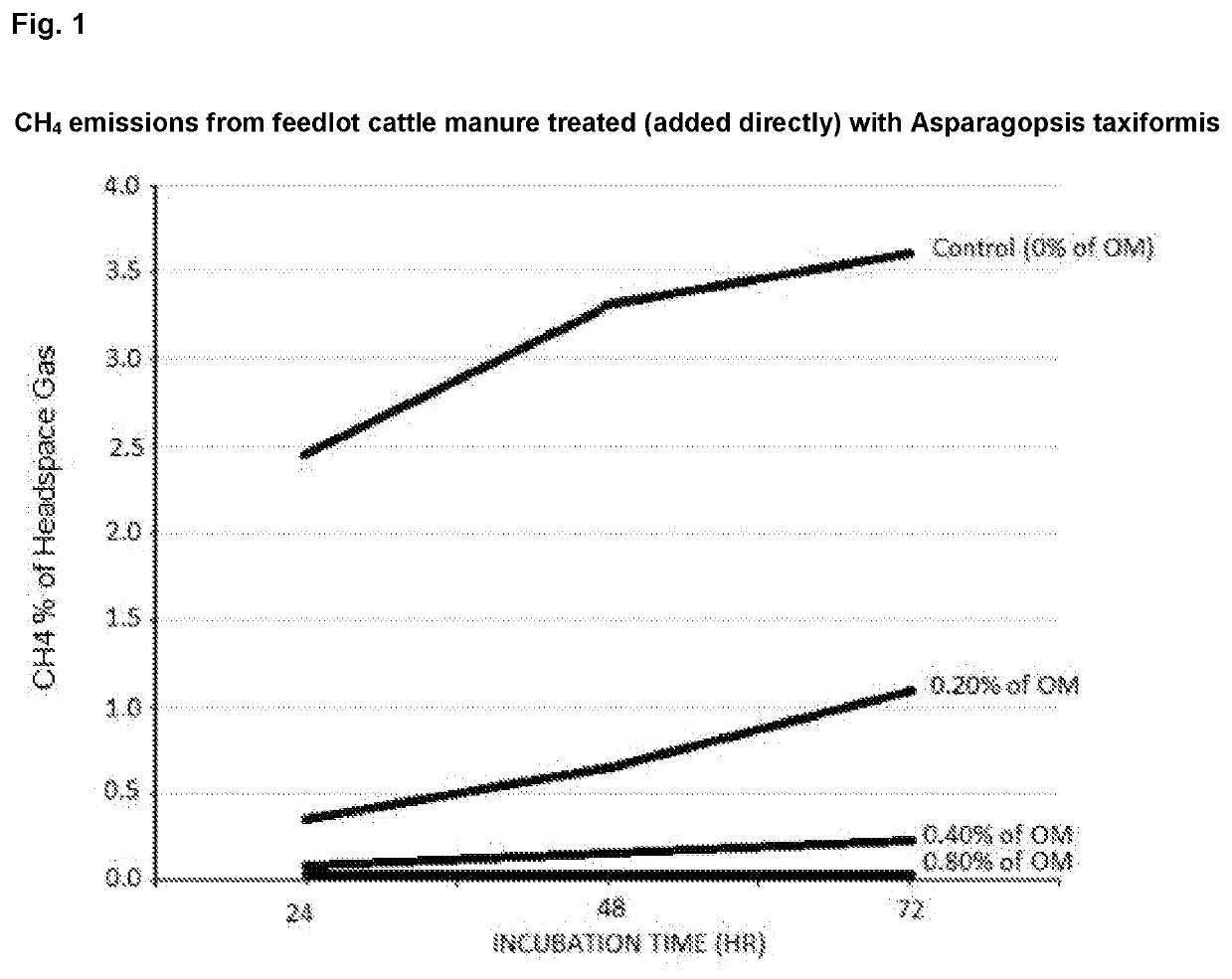Methods for producing treated manure
a technology of manure and treatment method, which is applied in the direction of biological water/sewage treatment, biological sludge treatment, waste based fuel, etc., can solve the problems of fugitive greenhouse gas emissions and relatively high cost of the above methods
- Summary
- Abstract
- Description
- Claims
- Application Information
AI Technical Summary
Benefits of technology
Problems solved by technology
Method used
Image
Examples
example 1
Contacting Biomass Comprising Bromoform with Manure In Vitro Significantly Reduces Methane Production
[0208]Asparagopsis was used as an example of biomass comprising bromoform (see Example 2), to examine the effect of biomass containing biomass on biogas production from animal manure.
[0209]The red seaweed Asparagopsis taxiformis in the filamentous gametophyte phase was collected from a site near Humpy Island, Keppel Bay, Qld (23o13′01″S, 150o54′01″E) by MACRO (Center for Macroalgal Resources and Biotechnology) of James Cook University (JCU) in Townsville, QLD. The collected biomass was frozen and stored at −15° C. then shipped to Forager Food Co. (Red Hills, TAS), where it was freeze dried to approximately 95% dry matter to retain volatile bioactive compounds. The dried Asparagopsis biomass consisting of 50% OM was milled (2-3 mm) to ensure a uniform product.
[0210]The biomass was added directly to fresh manure collected from the rectum of grain fed feedlot cattle at rates of approxim...
example 2
Halogenated Metabolites in Asparagopsis taxiformis and Asparagopsis armata
[0217]The levels of bromoform, were examined in Asparagopsis spp. Asparagopsis armata was collected from Cloudy Bay, Bruny Island, Tasmania, 43°.43′94″ S; 147°.21′.52″ E.
[0218]FIG. 2 demonstrates biomass of wild Asparagopsis taxiformis in the benthic gametophyte phase collected from a site near Humpy Island, Keppel Bay contains the halogenated metabolite bromoform, and that Asparagopsis taxiformis and Asparagopsis armata contain similar levels of bromoform.
PUM
| Property | Measurement | Unit |
|---|---|---|
| concentrations | aaaaa | aaaaa |
| temperature | aaaaa | aaaaa |
| weight | aaaaa | aaaaa |
Abstract
Description
Claims
Application Information
 Login to View More
Login to View More - R&D
- Intellectual Property
- Life Sciences
- Materials
- Tech Scout
- Unparalleled Data Quality
- Higher Quality Content
- 60% Fewer Hallucinations
Browse by: Latest US Patents, China's latest patents, Technical Efficacy Thesaurus, Application Domain, Technology Topic, Popular Technical Reports.
© 2025 PatSnap. All rights reserved.Legal|Privacy policy|Modern Slavery Act Transparency Statement|Sitemap|About US| Contact US: help@patsnap.com


